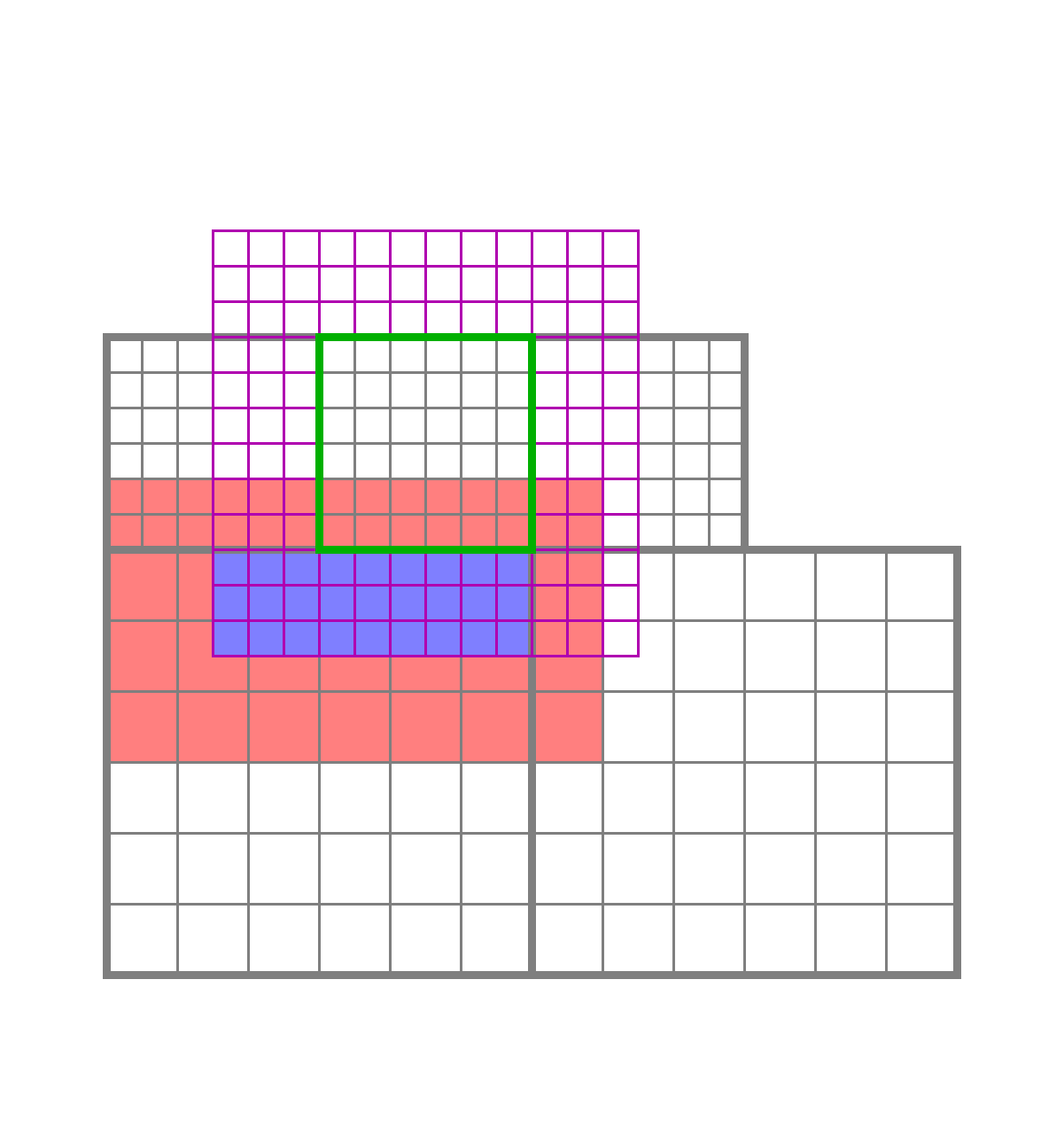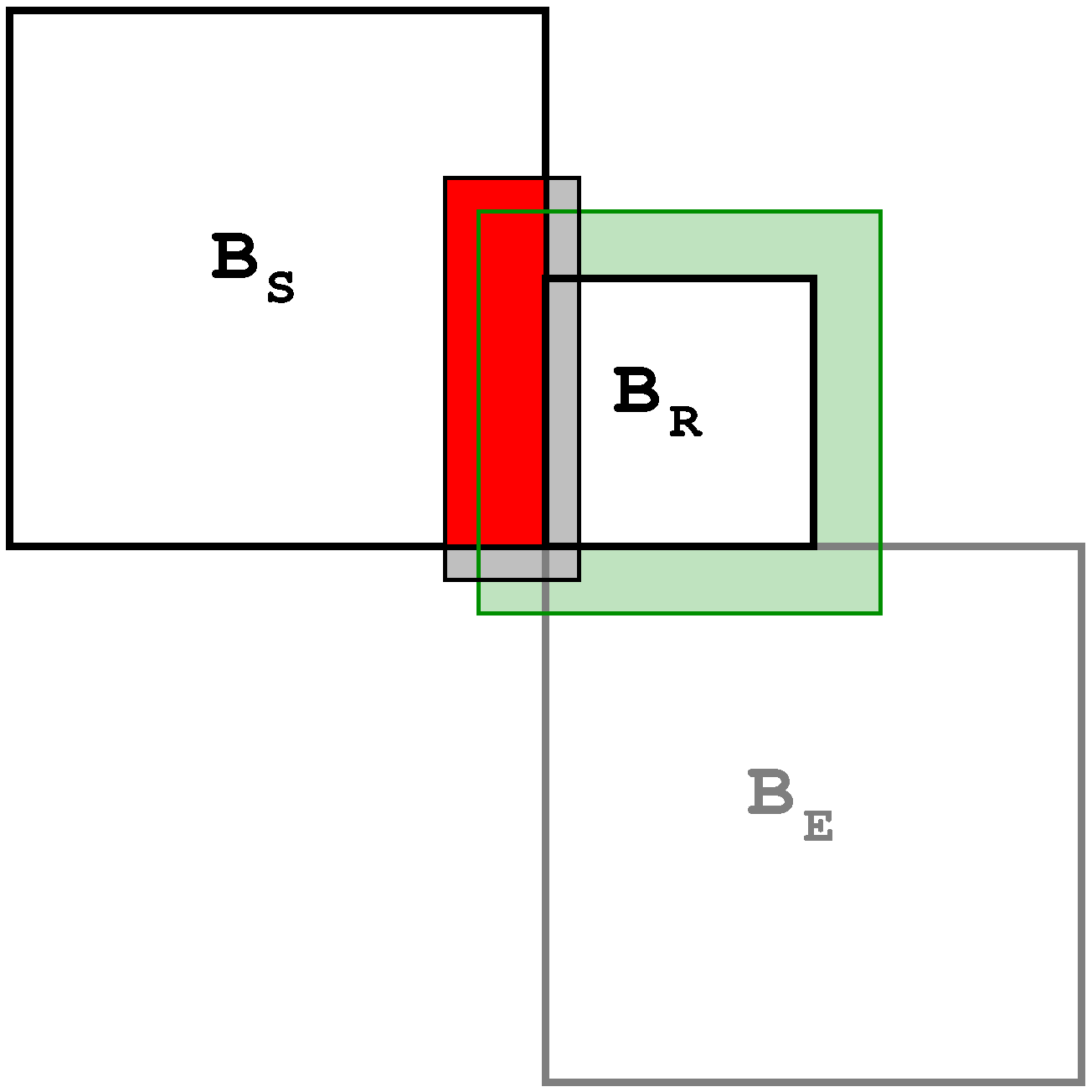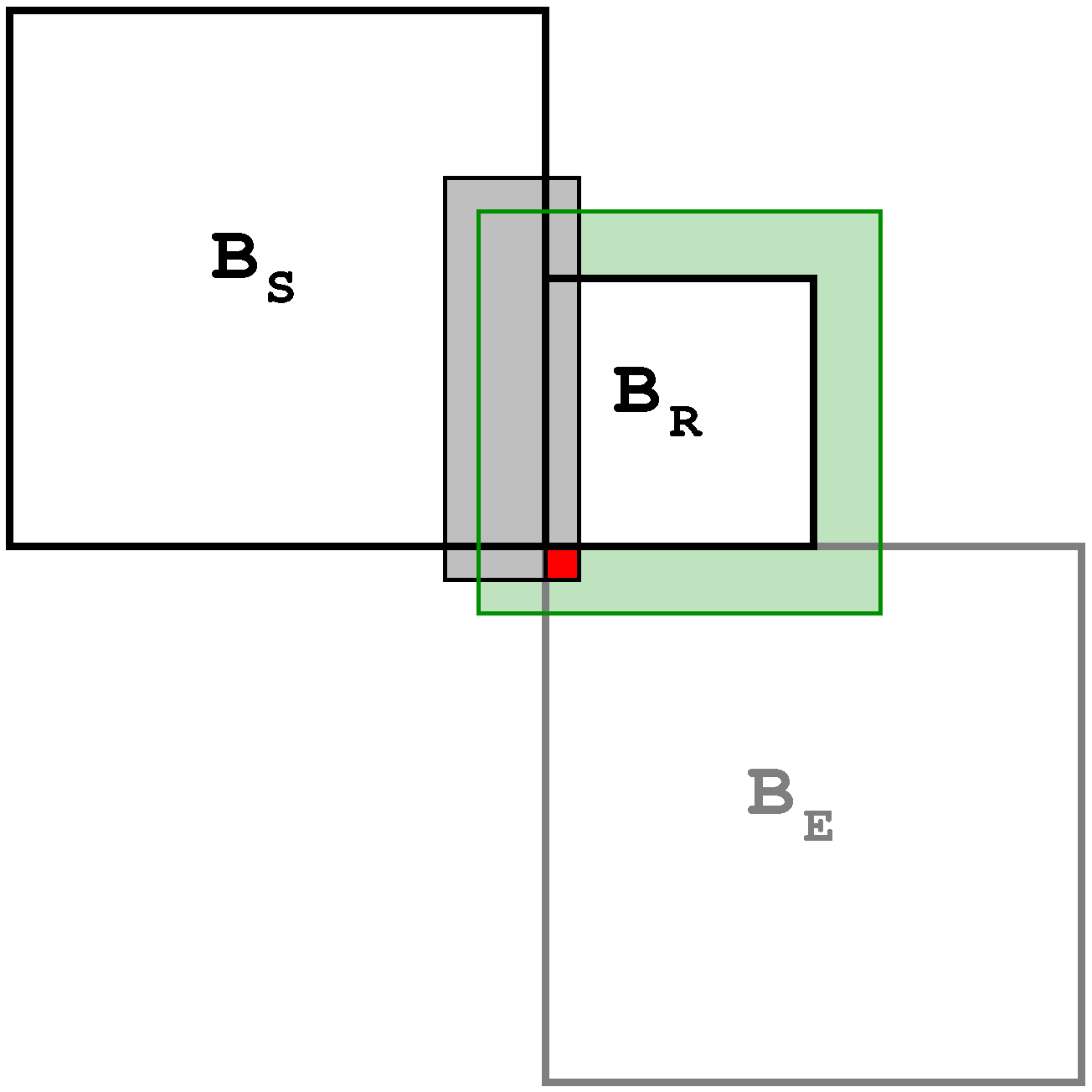4. Interpolation Design
4.1. Requirements
This document describes incorporating “ENZO interpolation” into Enzo-E; in particular, the “SecondOrderA” method. This method requires an extra layer of coarse-level cells compared to the basic “trilinear interpolation” previously implemented in Enzo-E. Implementing this requires additional communication, since this augmented coarse-grid array overlaps multiple additional blocks.

In ENZO’s SecondOrderA interpolation method, multiple additional blocks intersect the extended array of coarse values (red) required for computing the interpolated ghost zone values (blue) for the fine block (green) that intersects a coarse block.
4.2. Design
We decompose the operations required according to the role of blocks for each interpolation. Note a given block may participate in multiple roles for different block faces. There are three main block roles involved in an interpolation:
Sending block
sends its overlapped cell values to the receiver
Extra block
sends its overlapped cell values to the receiver
Receiving block
receives data from sending and extra blocks
copies incoming data to padded array
copies its own overlapped cells to the padded array
calls the interpolation operation using the padded array to compute the interpolated ghost cell values
Some minor operations are not included, such as extra blocks that are in the same level as the receiving block need to “coarsen” their values before sending to the receiving block in operation 3.
4.2.1. Sending Block

The sending block must send its data to the receiving block, as it
does for all other refresh operations. The main difference is it
requires an additional layer of padding when sending. This is handled
by the method Block::refresh_load_field_face_() in control_refresh.cpp
4.2.2. Extra Block

In addition to the sending block, some extra blocks must also send
their overlapped cell data to the receiving block. This requires an
extra loop and some additional logic for a block to determine that it
must participate in an interpolation operation not as the sender or
receiver. This is handled in the
Block::refresh_load_extra_face_() method, which can be found in
the control_refresh.cpp source file. Depending on the relative
mesh refinement level, an extra block may be handled
4.2.3. Receiving Block
